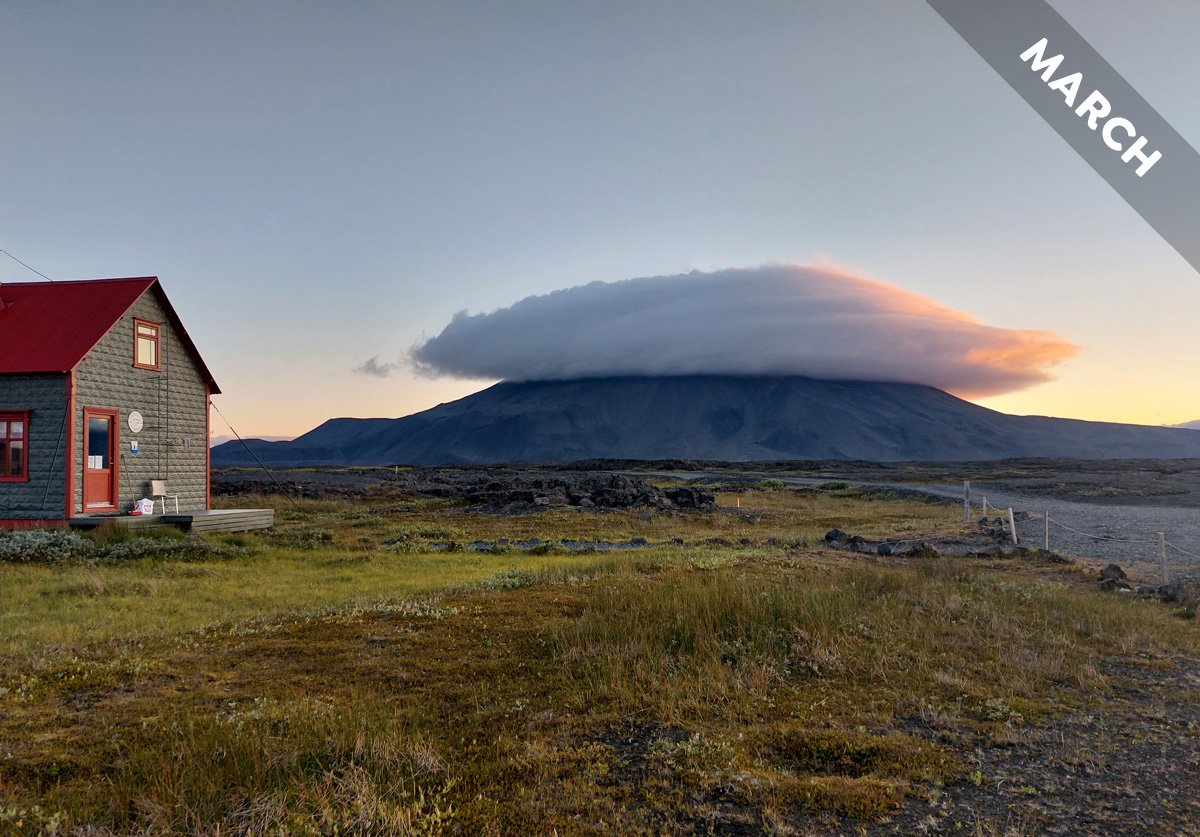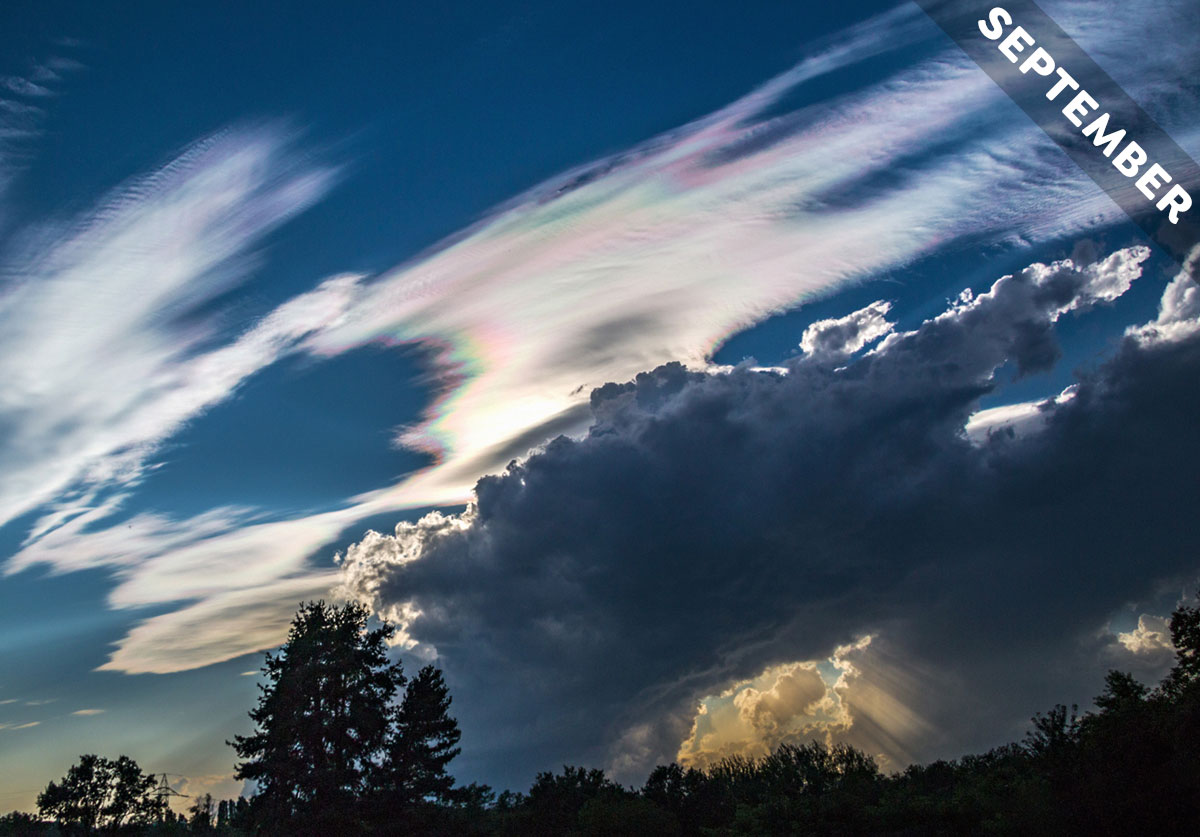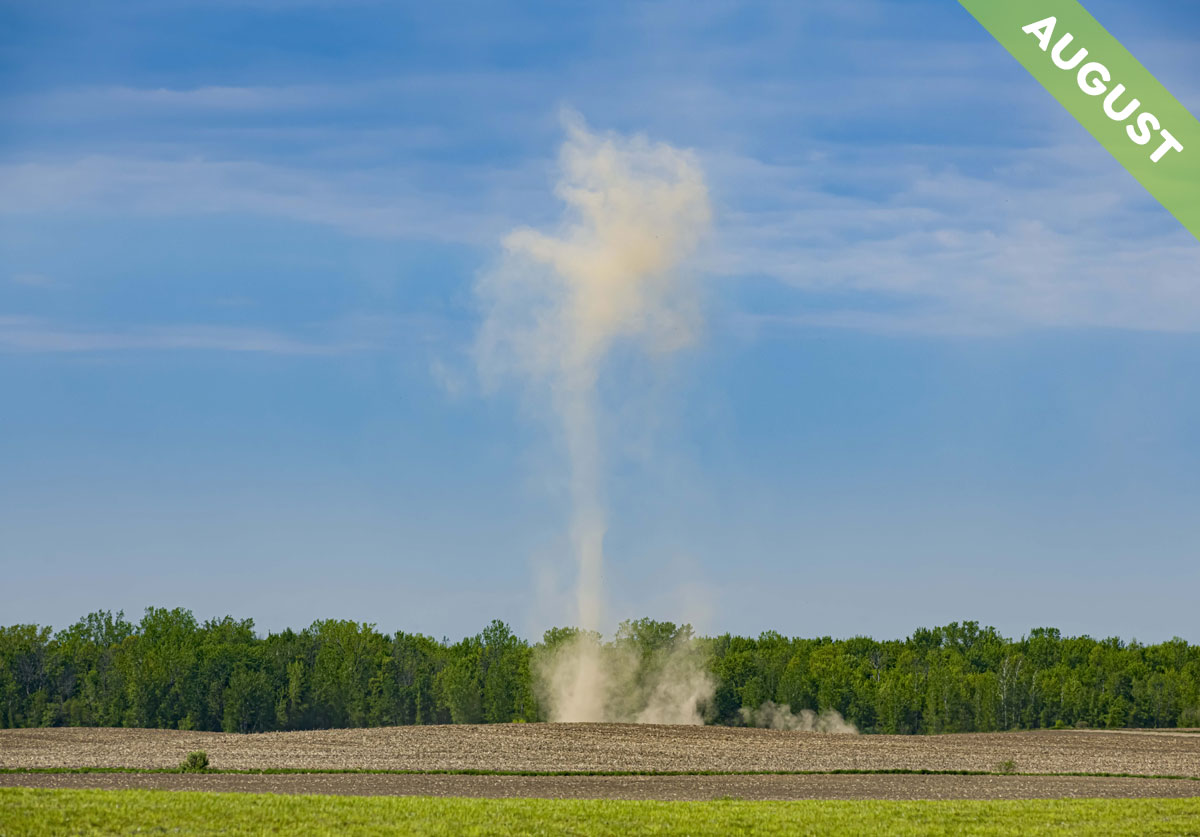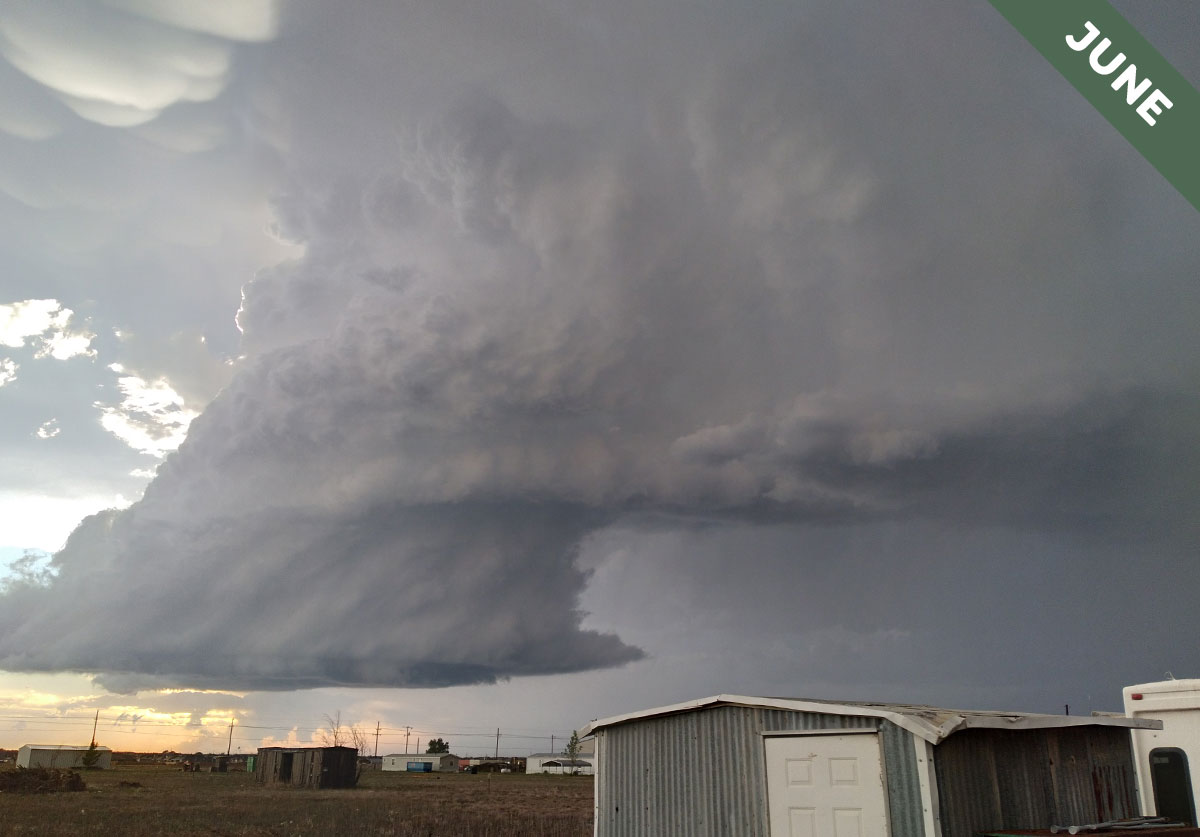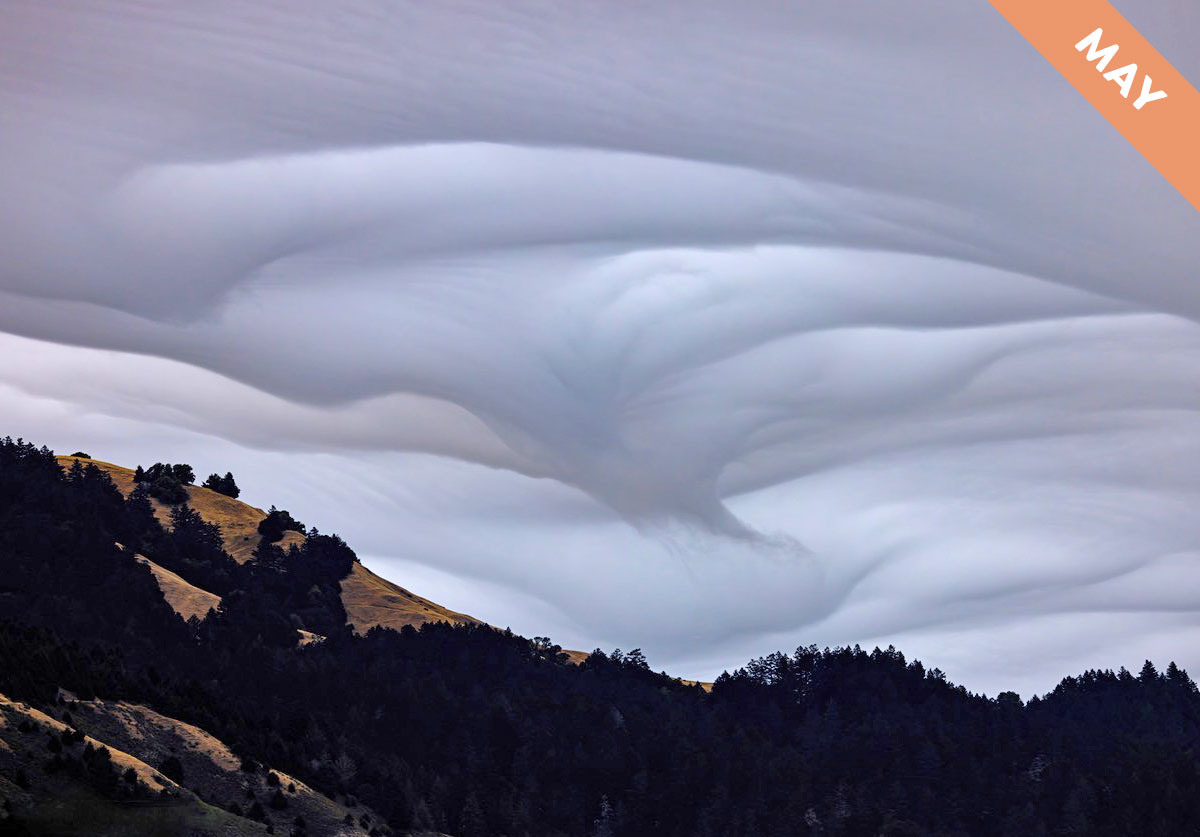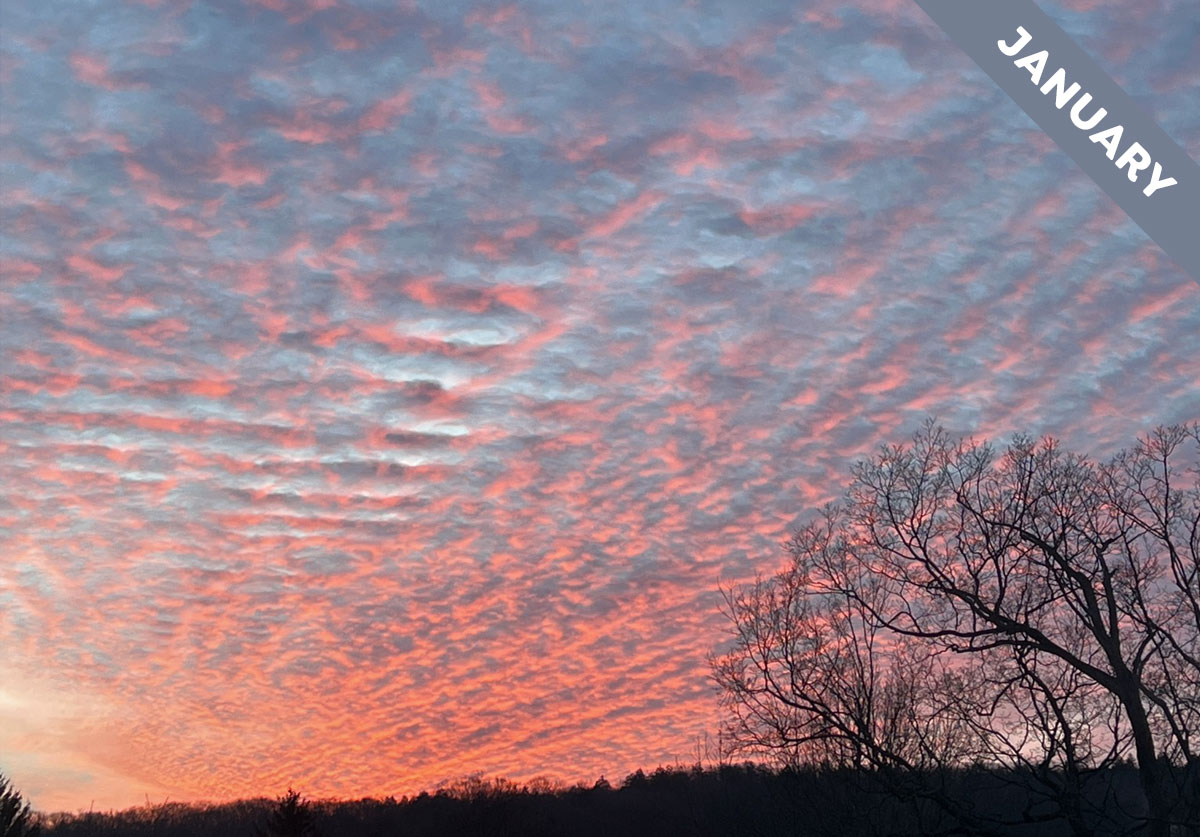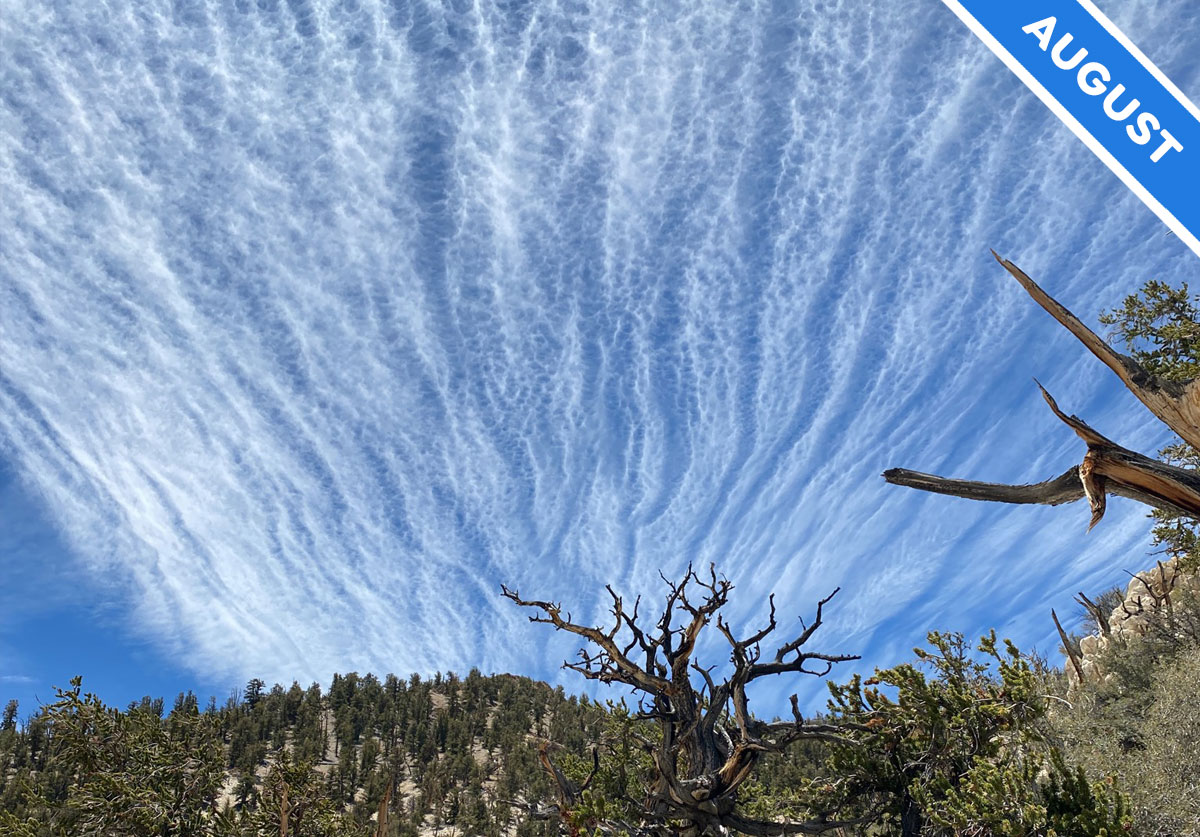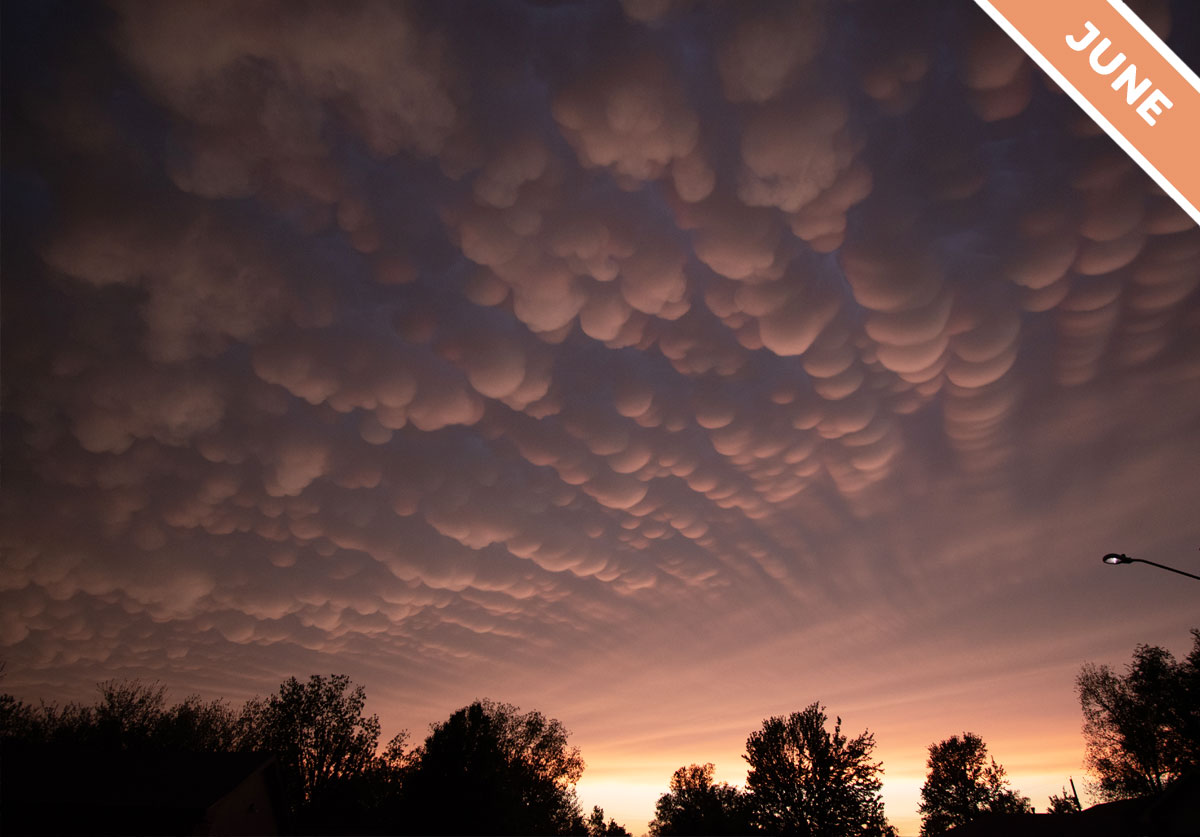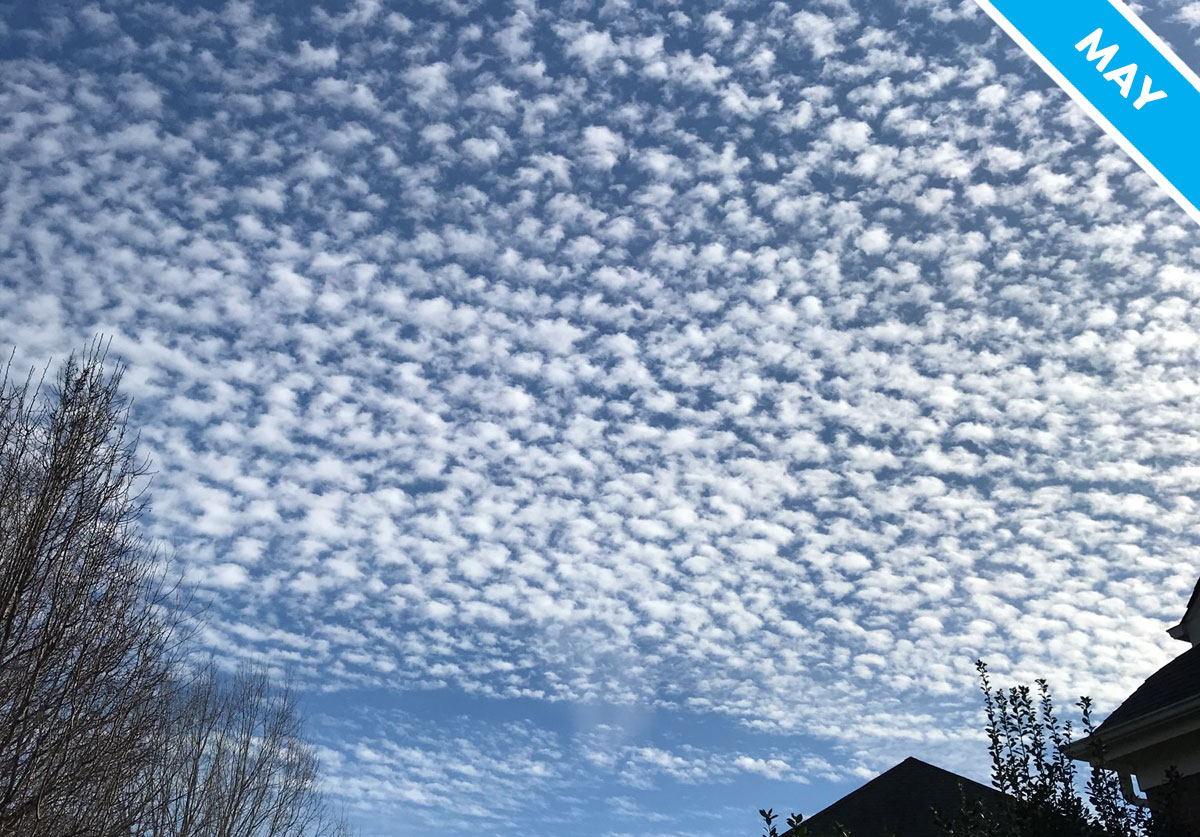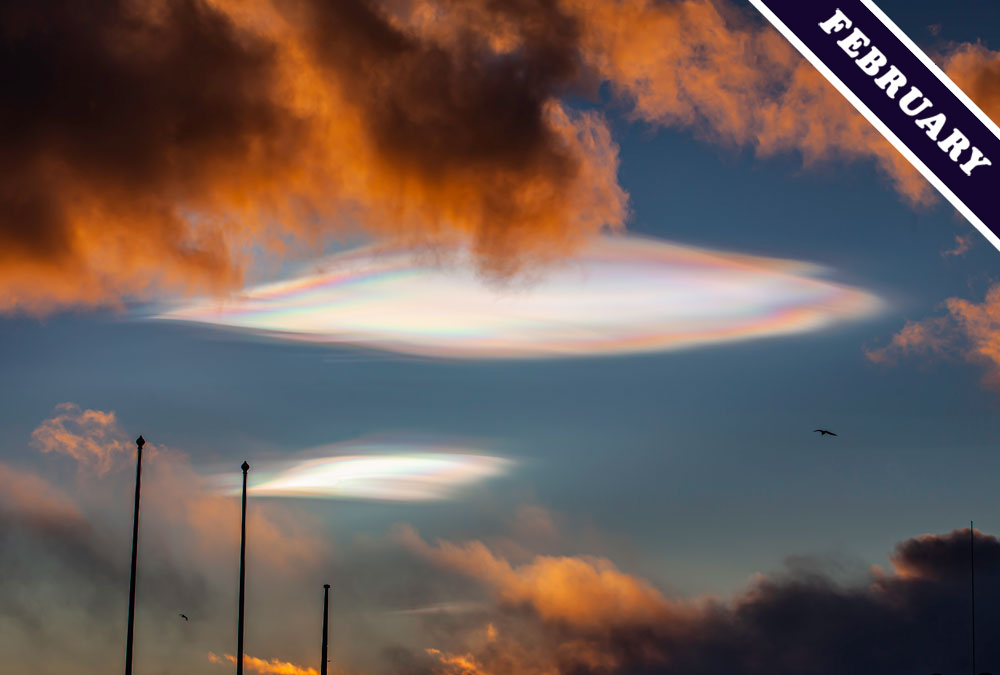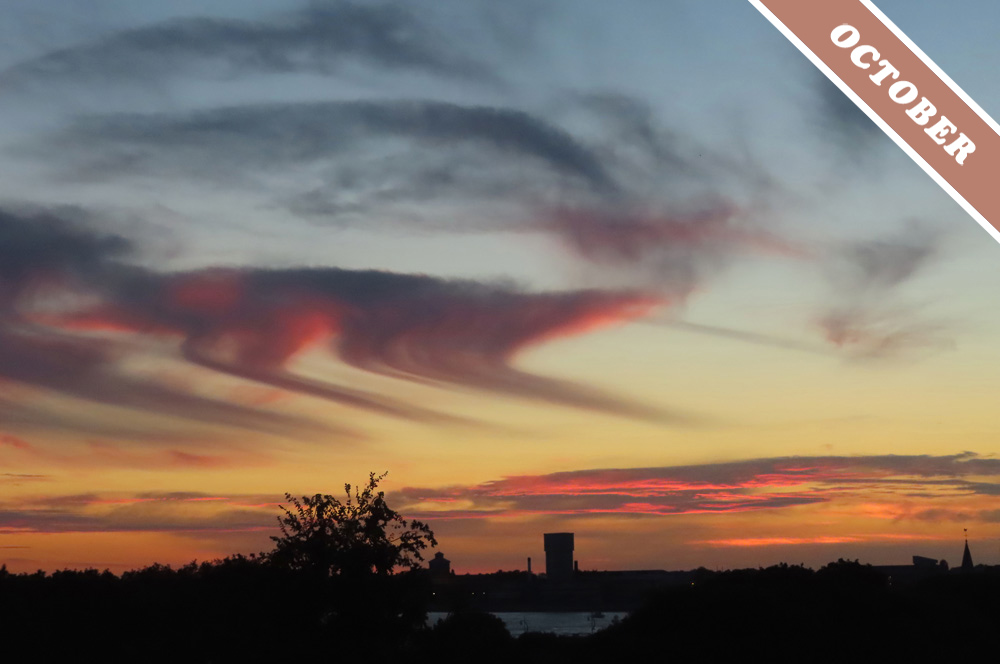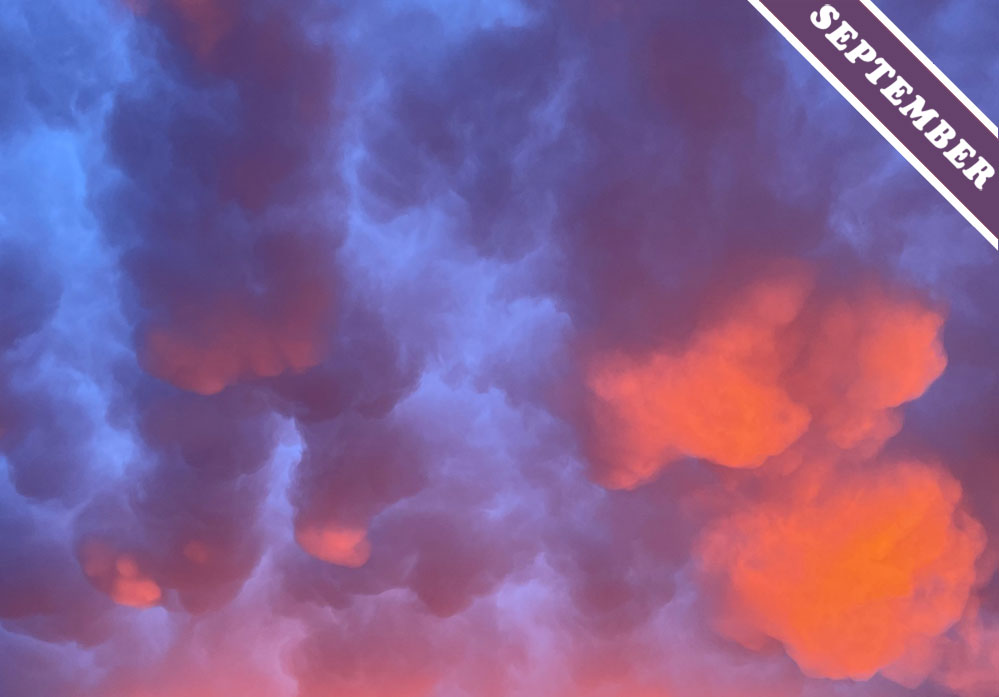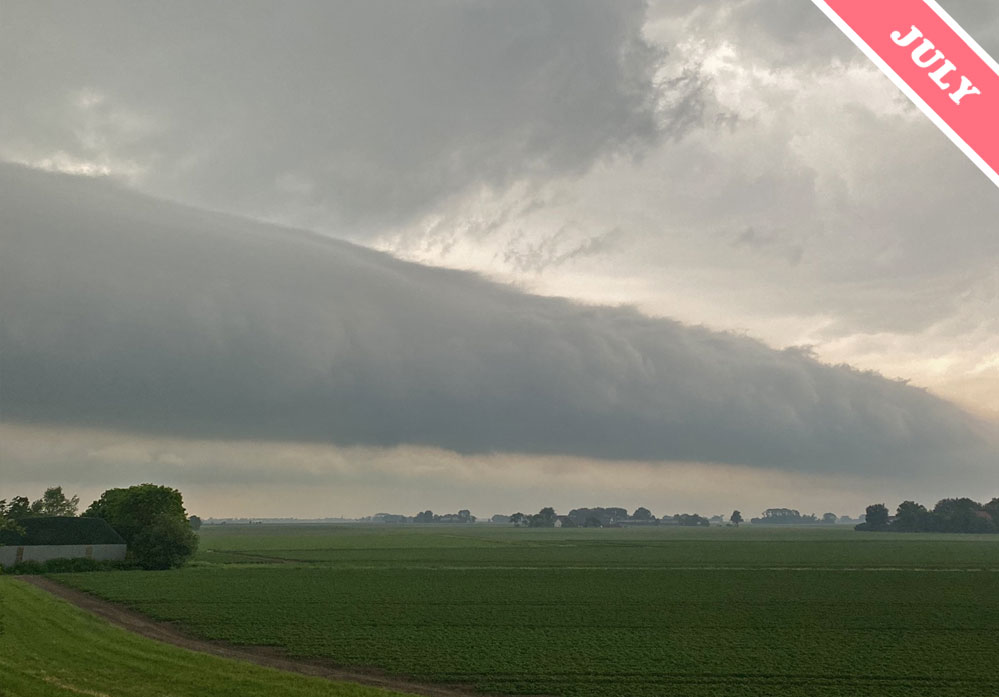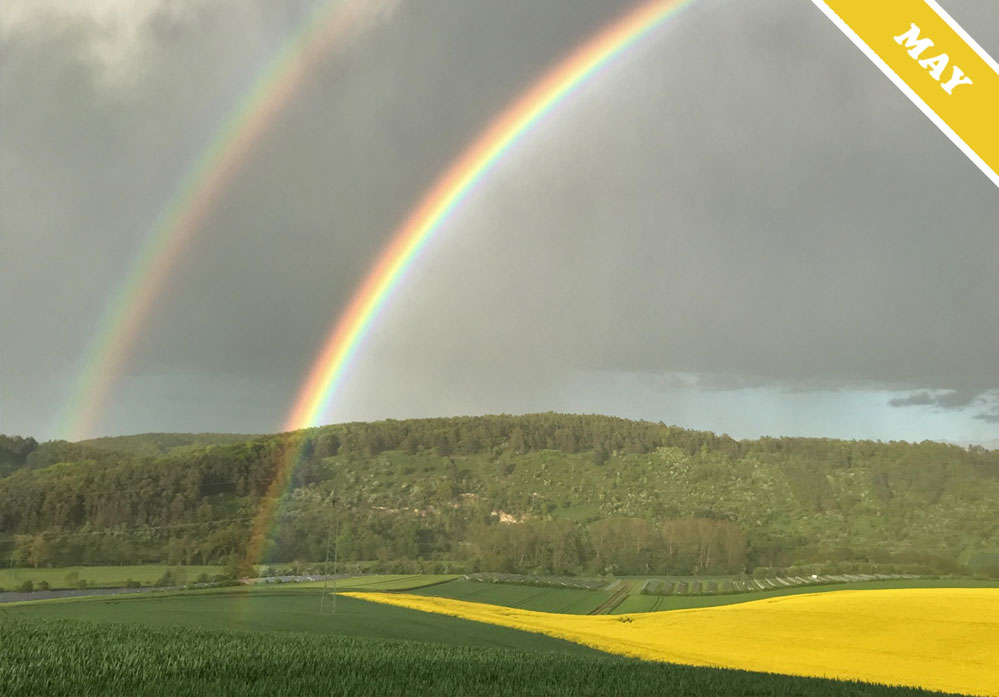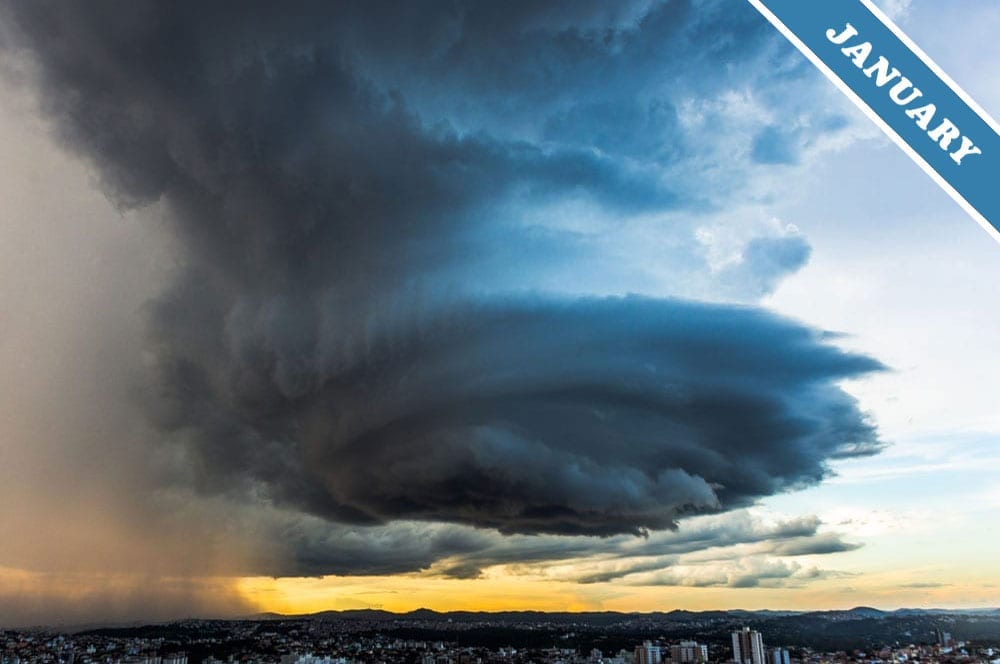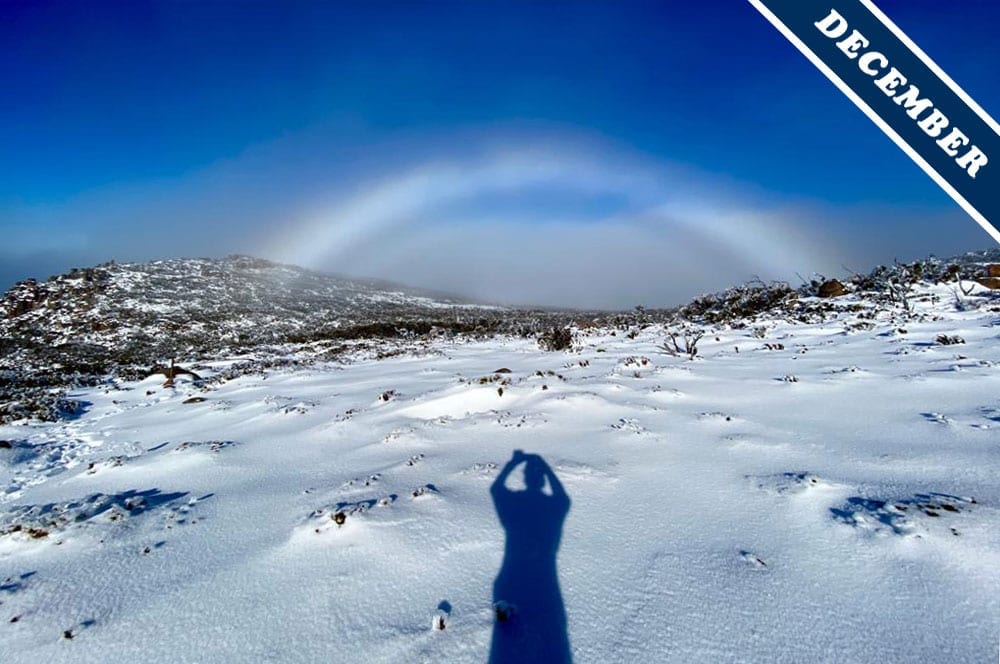Fluctus is a cloud formed by a particular wind pattern known as wind shear. With its breaking-wave curls, it is the most iconic of all the wave clouds, and it features as Cloud of the Month for April…
Category: Cloud of the Month
Every month, we choose one of our favourite photographs from the Cloud Gallery to become our Cloud of the Month.
It’s this season’s ultimate in mountain fashion. Check out the cap cloud, which we feature as Cloud of the Month for March…
Ever wondered how low a low cloud can go? In Cloud of the Month for February, we introduce you to the blanket of cloud that can form right down at the ground and fill mountain valleys to the brim…
Last month saw the most dramatic display over Europe in over 15 years of the most colourful cloud in our skies. We explain all in Cloud of the Month for January…
Spotting a dramatic display of ice-crystal optical effects is about being in the right place, at the right time, with the right cloud…
Meet the cloud that glider pilots surf like an ocean wave…
Cirrocumulus usually appears in patches that don’t hang around for long. October’s Cloud of the Month shows an unusually rare expansive form of this fleeting cloud…
What makes a cloud turn multicoloured? We explain in September’s Cloud of the Month…
On a hot, still day in the height of summer, a spinning cloud of dust can develop. It’s known as a dust devil, and it features as a very dry Cloud of the Month for August…
A cavum, or fallstreak hole, is the perfect cloud feature for any clouspotter with a sweet tooth, as we explain in Cloud of the Month for July…
In Cloud of the Month for June, we introduce the murus cloud, which appears beneath huge storm systems and likes to give birth to tornadoes…
When the sky imitates a turbulent sea and giant meringue peaks, you’re likely looking at an asperitas cloud…
Cloud of the Month for April is the rare and fleeting horseshoe vortex cloud. Keen to spot one? Don’t get your hopes up…
Why do clouds sometimes line up in long, parallel streaks? We explain with the help of a cloud called Cirrus fibratus…
If ever there were a cloud forewarning of chaos, it would be the arcus, which features as Cloud of the Month for February…
This form of Altocumulus cloud, spotted over Winsted, Connecticut, US by Pamela Crimmins (Member 48,931), reveals how the winds in our lower atmosphere can flow in different directions at different levels. We explain why in Cloud of the Month for January…
When you wake on a clear, freezing morning to sparkles in the sunlight and a host of bright arcs, rings and spots in the sky, you can thank the subtle ice fog known as diamond dust. This glittering morning mist plays the starring role in Cloud of the Month for December…
Meet the cloud formation that resembles those traffic safety markings on roads. We introduce Stratocumulus undulatus in Cloud of the Month for November…
Meet the two ghostly optical effects caused by clouds: the fogbow and the Brocken Spectre, which both feature in Cloud of the Month for October…
Meet the mighty Cumulonimbus, a cloud with plenty to shout about, in Cloud of the Month for September…
Lacunosus are clouds clouds that look like foam bubbling on ocean waves. We explain how they form in Cloud of the Month for August…
Building storm clouds can sometimes wear delicate cloud hats. And they generally go on to eat their hats. We explain all in the Cloud of the Month for July…
A sky festooned with dramatic lobes of cloud, known as mamma, is often a sign that storms are passing. We explain all in Cloud of the Month for June…
Ever wondered why clouds sometimes arrange themselves into regular patterns of tiny cotton balls? We explain what causes this with a demo you can perform in your own kitchen with a panini toaster in May’s Cloud of the Month.
They say every cloud has a silver lining, but some have multi-coloured ones too. That’s when the edges of a cloud are embellished with delicate pastel colours known as cloud iridescence…
The Eyebrow Cloud That’s Waiting to be Made Official
This cloud formation should have a Latin name, but it is yet to be classed as an official cloud type. It can appear in the turbulent airflows downwind of mountain peaks, and we think it looks like eyebrows in the sky.
This would be a good cloud to be added to the list of types because it has a distinctive appearance that’s easily differentiated from other formations. Also, pilots would likely want it to have a name for practical reasons: so that they can learn to stay well away from it. This cloud reveals where turbulence in the mountain airflow is particularly chaotic and violent, which is where no glider pilot wants to fly.
The turbulence develops as part of the rising and dipping flow of air as winds pass over mountains. Much of the airflow is smooth, rising to pass over the peak and dipping back down again beyond, like water flowing over a rock in a stream. But just as the water flowing in a stream can break and foam at a particular point beyond the obstacle, so can the wave of the airflow break at a particular point downwind of the mountain peak. Where this happens, if it does, depends on the shape of the terrain and the speed of the wind. Often the breaking wave of air is invisible. Sometimes, it produces a churning, roll-like cloud described by pilots as a rotor cloud. Sometimes, when the air tumbles over itself, it makes the distinctive shape of eyebrow clouds.
We’ve had examples of this unnamed formation sent in by members from around the world, including examples over the Sierra Nevada of California, US, the mighty Himalayas of Nepal, and the alpine peaks of Switzerland like The Eiger mountain and The Jungfrau. We even have a Latin name in mind for it. This was suggested to us by Latin scholar Rick LaFleur, Franklin Professor of Classics Emeritus at the University of Georgia, US when we asked him how the Romans would have referred to an eyebrow. Rick suggested the term supercilium, which is Latin for ‘eyebrow’.
It’s been a few years since the Cloud Appreciation Society last argued that the official naming system for clouds should have a new classification of cloud added to it. The chaotic, wavy-looking asperitas cloud was eventually accepted as a new cloud type by the World Meteorological Organisation (WMO) after we’d argued the case for it to be given a name. Asperitas was added to the WMO’s official reference work The International Cloud Atlas back in March 2017. That was exactly five years ago this month. Perhaps it’s time to start a new cloud-classification campaign and raise some eyebrows with the supercilium cloud?
Altocumulus ‘supercilium’ spotted by app user ‘Cielo’ over the Sangre de Cristo Mountains of New Mexico, US.
Mother-of-pearl formations spotted over Iceland are the Cloud of the Month for February. Welcome to the high-altitude world of nacreous clouds…
In Cloud of the Month for January, we’re beamed up by the flying saucer of the cloud world…
When Claudio Cattaneo (Member 13,236) took to the ski slopes of Crans-Montana, Switzerland early on a cold December morning, he was greeted by a glittering display of halo phenomena…
Stratocumulus is a low, clumpy cloud layer that plays a vital role on our planet…
In Cloud of the Month for October, we explain the trails of precipitation known as virga and what they reveal about water in our atmosphere…
Mamma cloud features appear as lobes hanging from the underside of a cloud layer. Find out more in Cloud of the Month…
Let us introduce you to the ‘summertime halo’…
This long horizontal tube of cloud is a rare formation that develops in two very different circumstances. Here comes Cloud of the Month for July, the roll cloud…
We chase rainbows over Bavaria, Germany and discover there’s more to rainbows than meets the eye…
The tablecloth cloud isn’t the only dramatic formation produced by the mountains around Cape Town in South Africa…
These rings of delicate pastel colours around the Sun can be caused by the tiny particles of a cloud…
It’s all happening in this cloudscape spotted by Jan Curtis over Wyoming, US. This is a big sky with a big name that reveals the invisible airflows high above…
Cloud of the Month for January shows the twisting heart of a mighty storm system…
What happens when a cloud blurs a rainbow? Find out in the Cloud of the Month for December…



